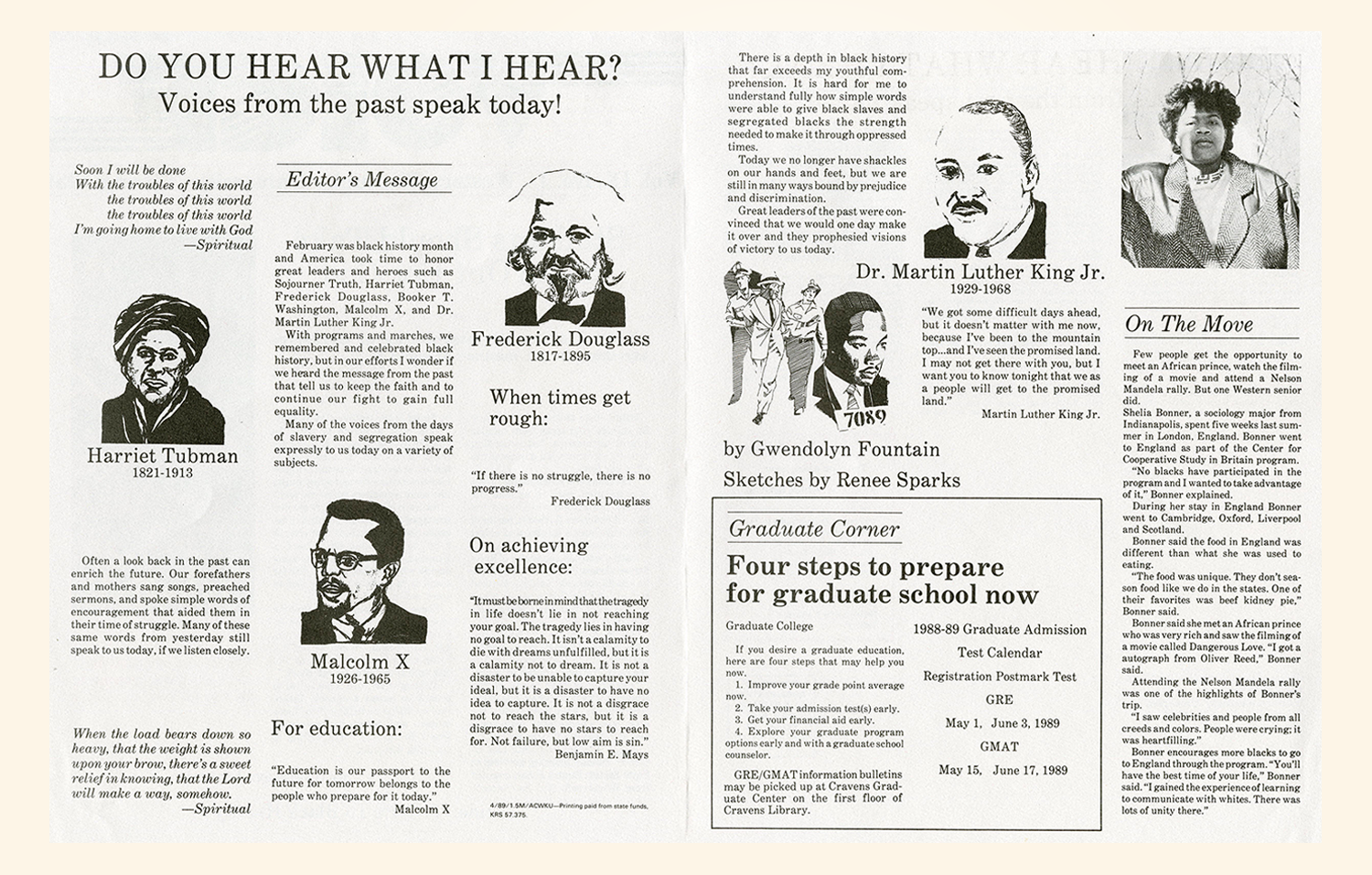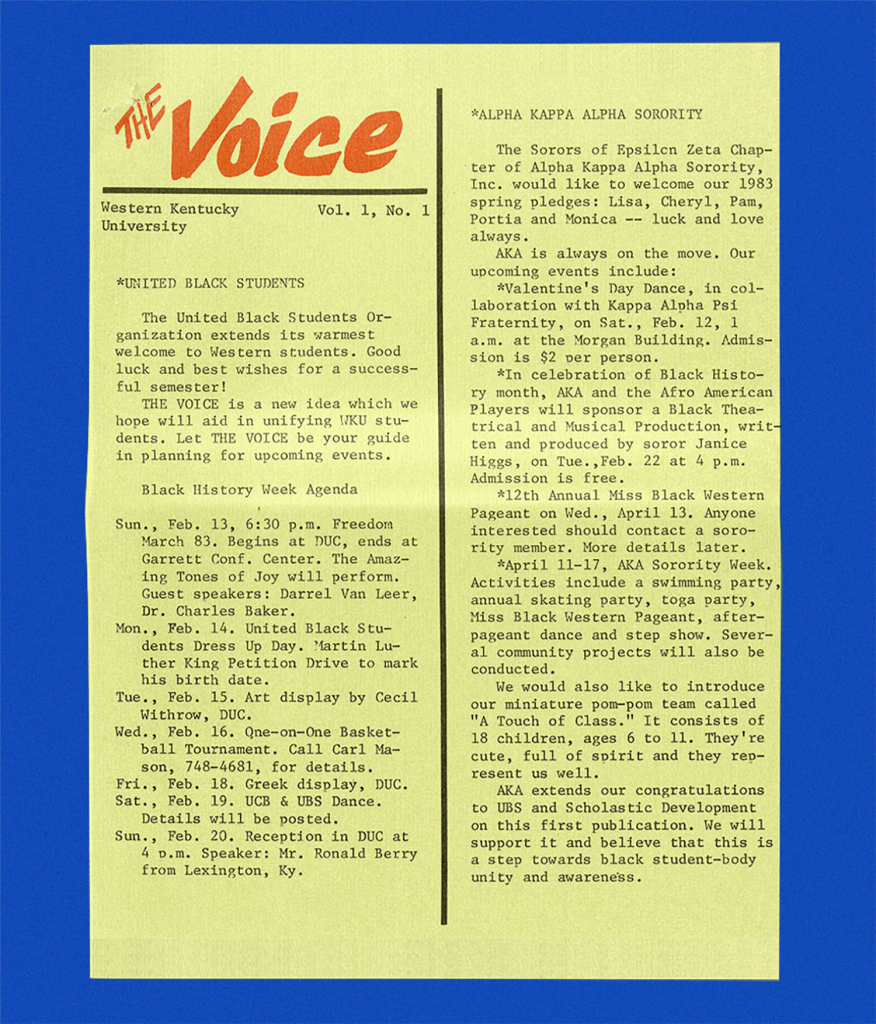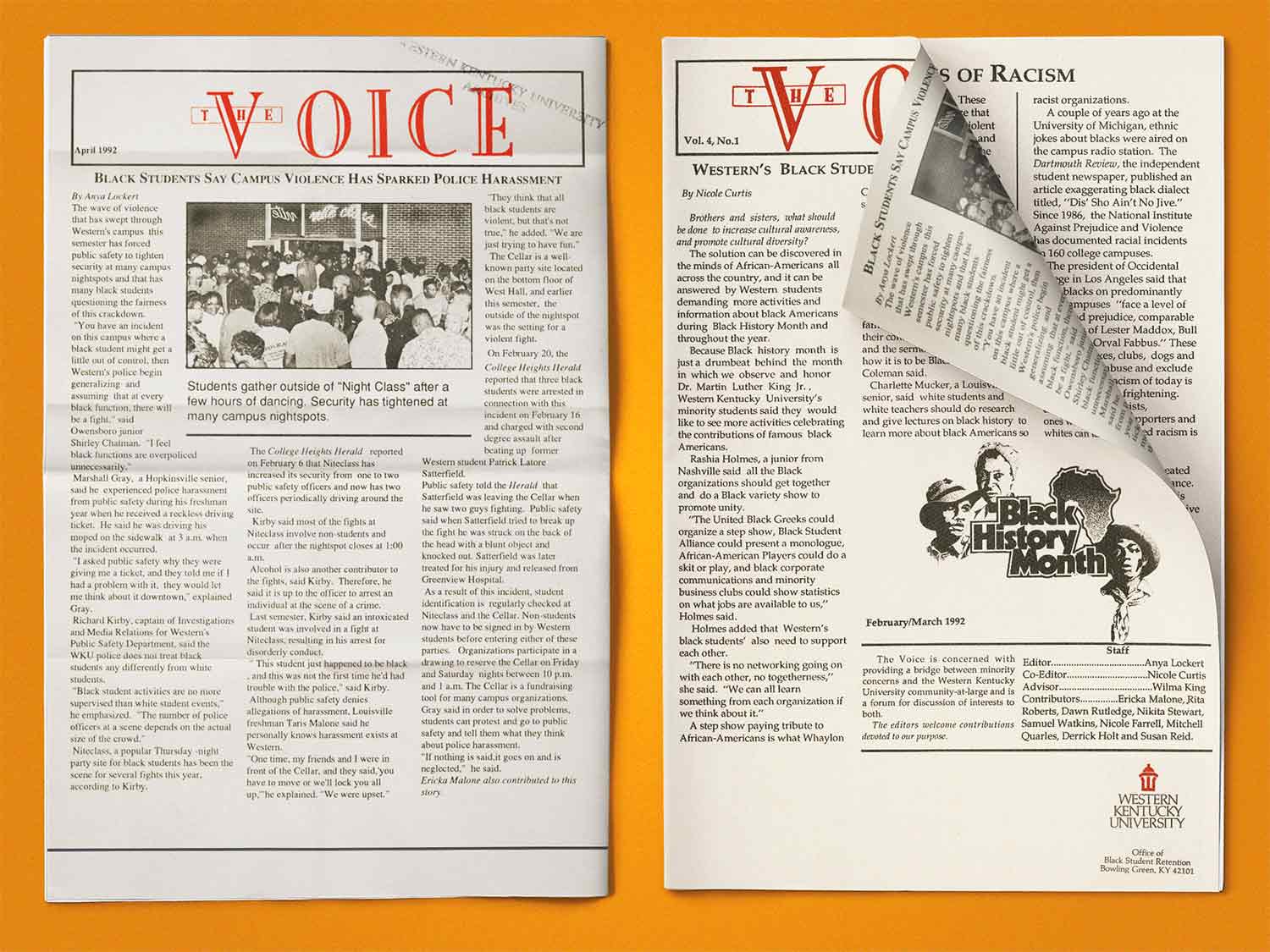On the third floor of the Kentucky Building on WKU’s campus sit shelves upon shelves of archives. These captures of WKU’s past make themselves a home in cardboard boxes with lids that fit snugly, preserving the irreplaceable history inside. Several of these boxes hold within them the chronology of Black history on Western’s campus.
A single wooden table sits aside from the rest of the furniture, backed by a metal shelving unit and adorned with a small, cardboard box. Lifting the lid off, it is revealed that this particular box holds a certain selection of manilla envelopes, ones that delineate the history of Black organizations on campus.
Among the 10 or so envelopes are a collection of The Voice newsletter, a publication created and sustained exclusively by Black students, that was distributed on campus between 1983 and 1993.








